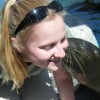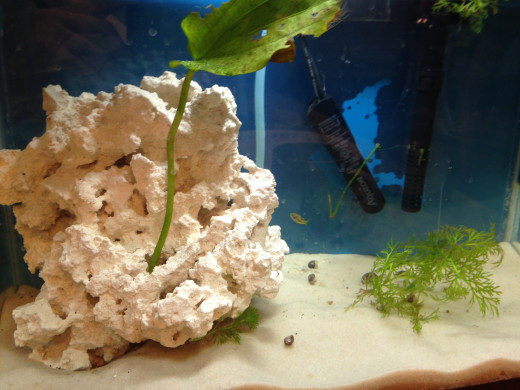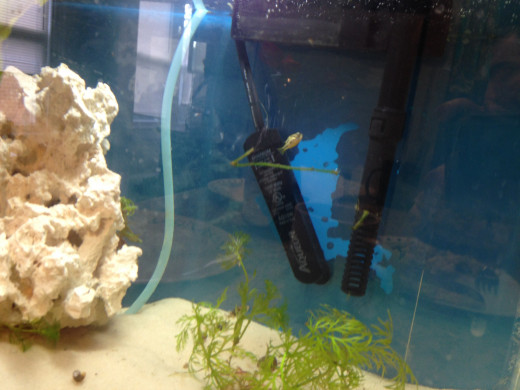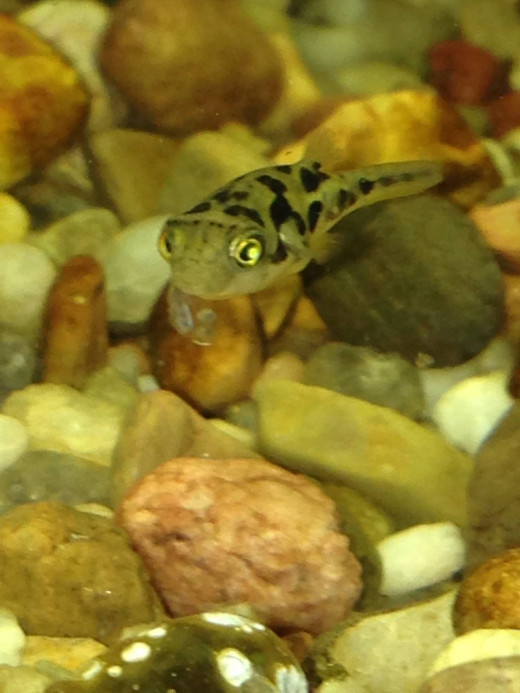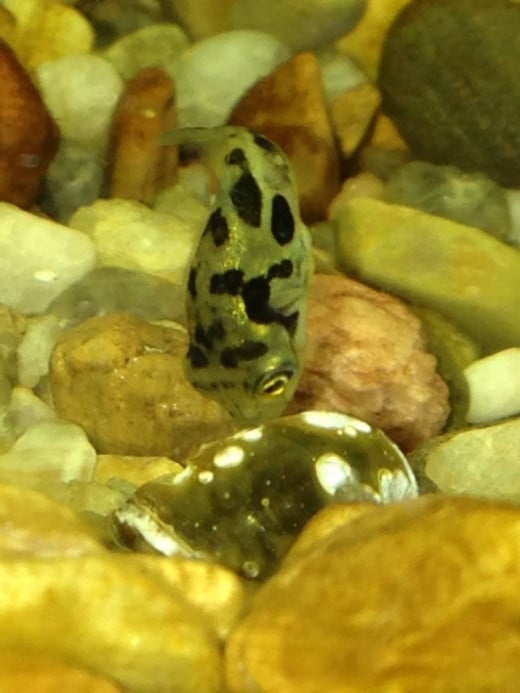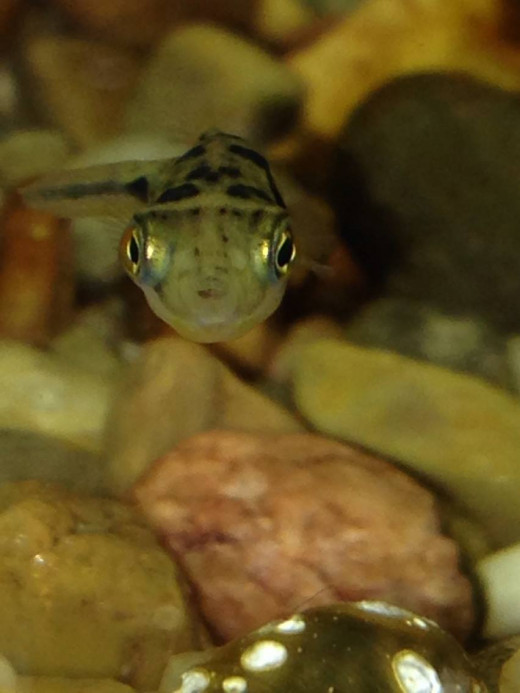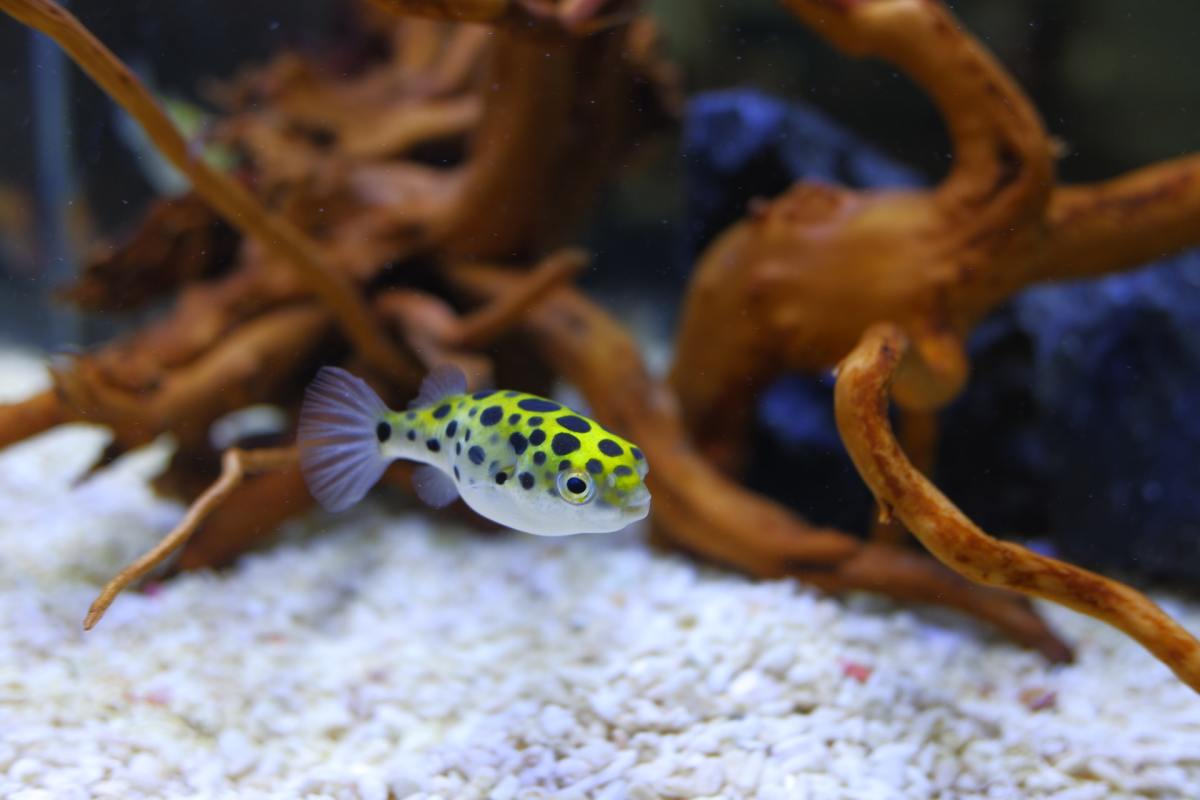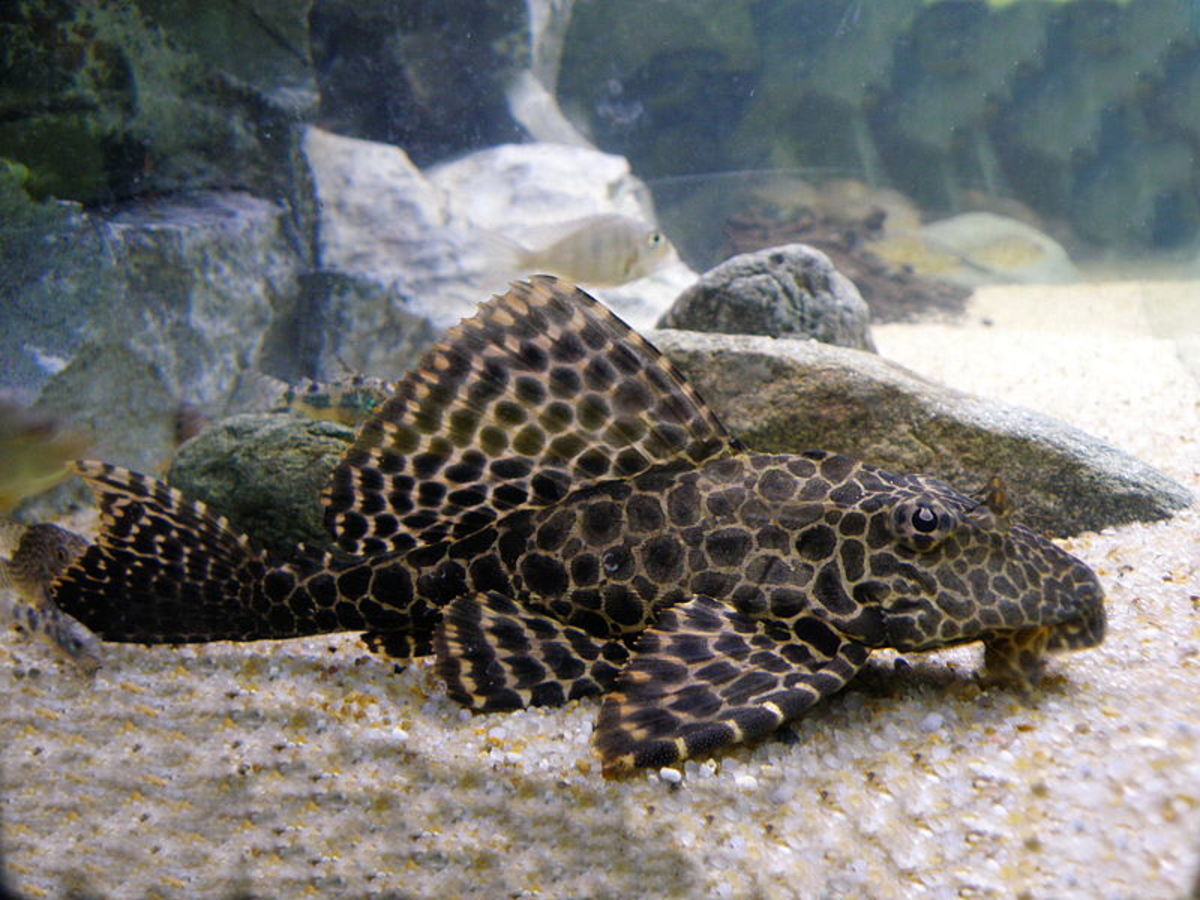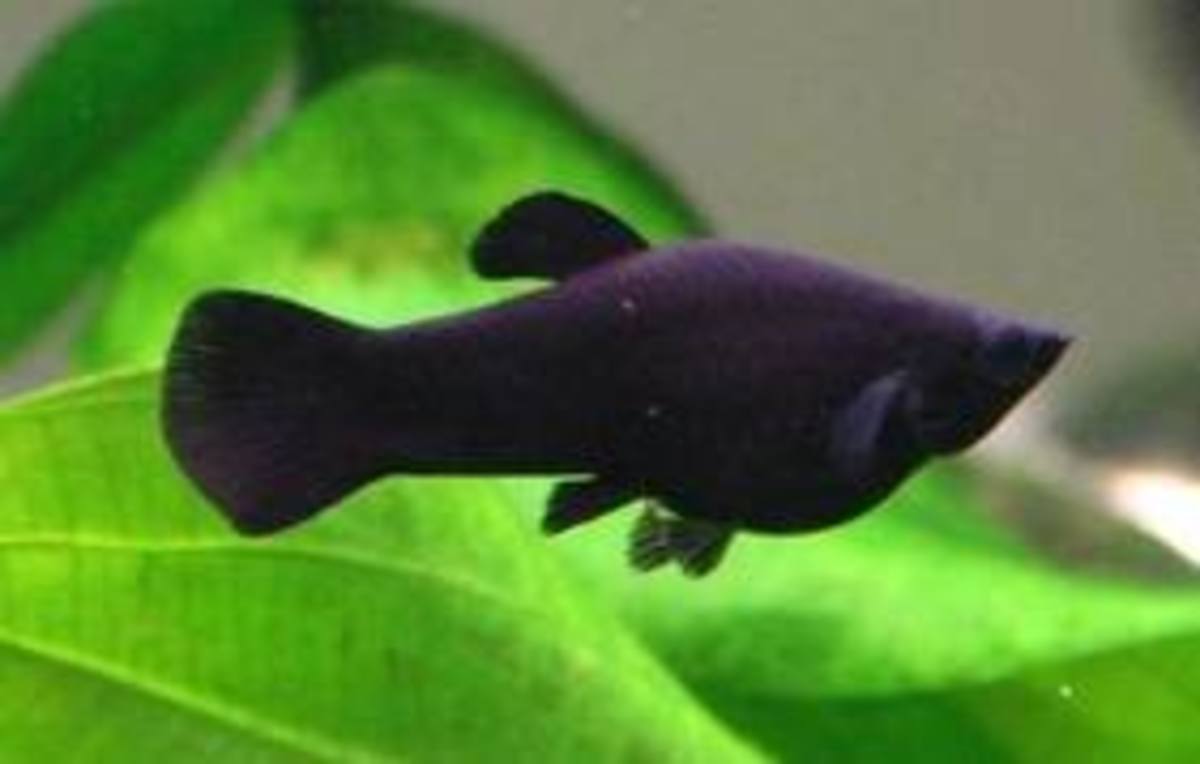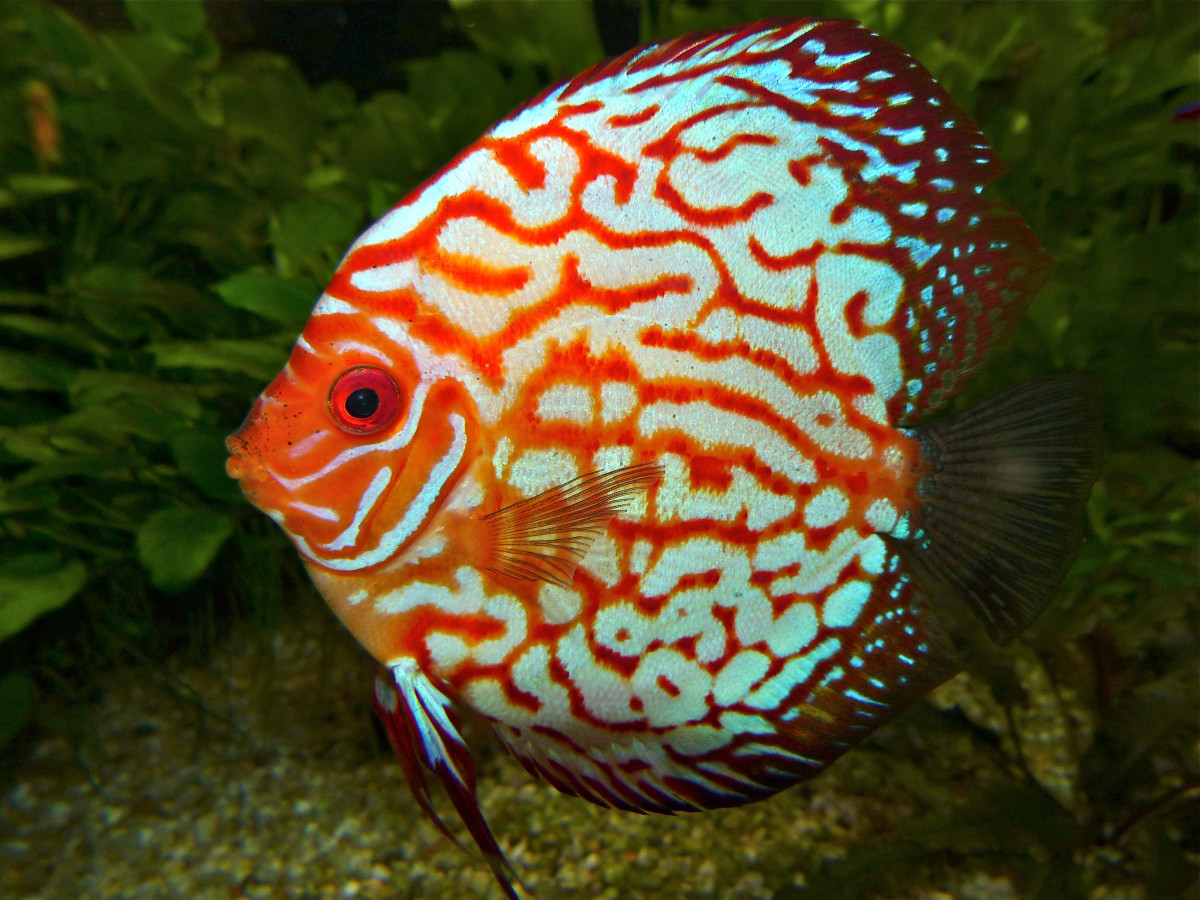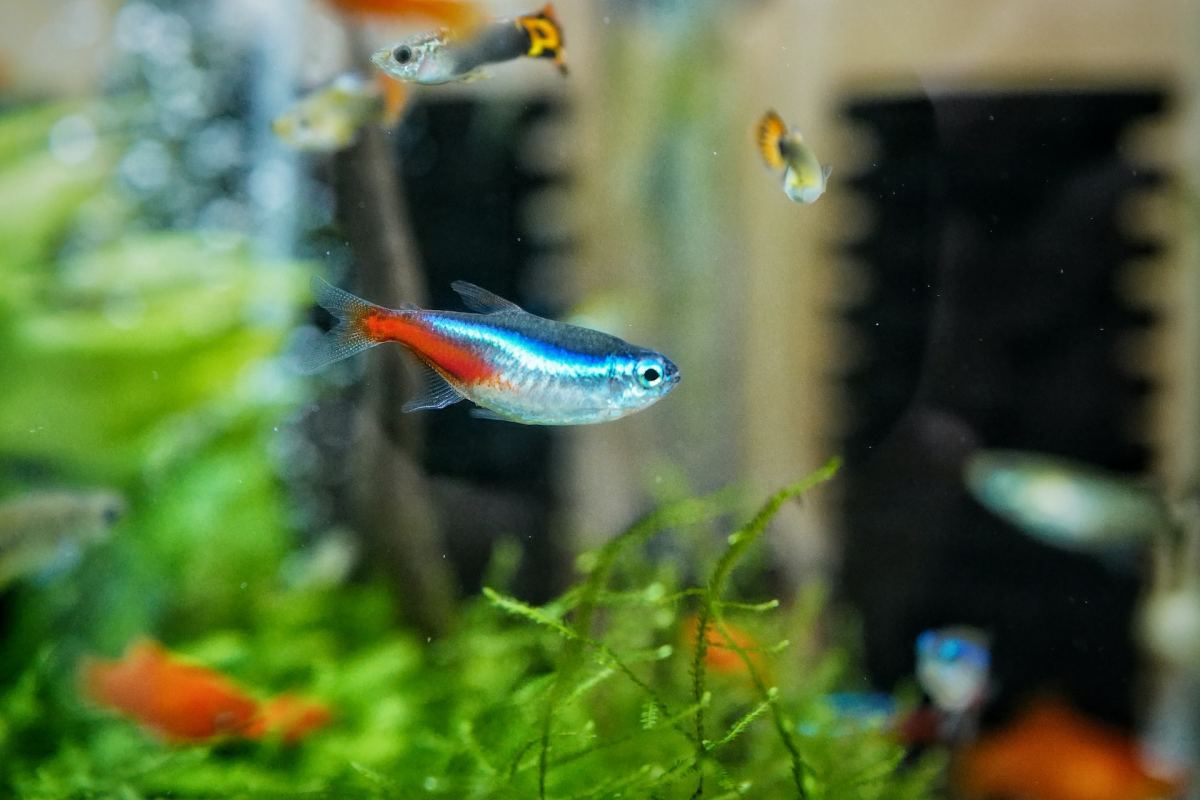Popular Home Aquarium Fish: Indian Dwarf Puffers
First Things First
Most puffers are brackish or saltwater fish. This is very important to keep in mind. Many pet stores will sell green spotted puffers in freshwater and tell unsuspecting customers that they can be housed in such conditions. This is true, they can tolerate freshwater. BUT, most puffers need brackish or saltwater in order to be completely healthy and live full, happy lives. If you keep a puffer that is meant to live in brackish water in freshwater it will eventually die. However, if you are dead set on having puffers in your home collection but do not want to deal with the hassle of brackish or saltwater tanks there is still hope. The Indian dwarf puffer is a species of puffer that lives exclusively in freshwater.
Just like with another fish these little puffers have specific water quality parameters that need to be met in order for them to live stress free. These guys also have a temperament that can make housing them a little tricky. Just like with their marine and brackish counterparts these guys are carnivorous and require a diet that offers variety.
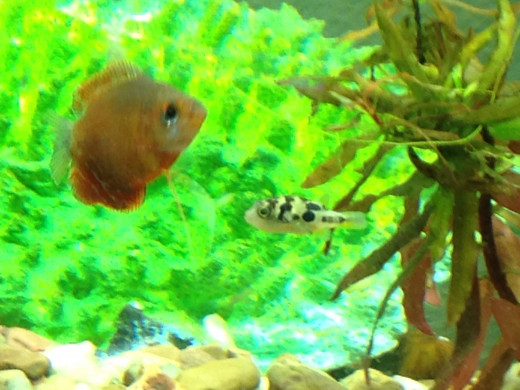
Housing Options
If you have ever walked by a puffer tank at a pet store chances are pretty good you fell in love with the way they all seemed to come over and check you out. They most likely followed your finger and seemed so interested in whatever you were doing. If you got close enough you most likely saw the small that never leaves their face. How could these cute little fish be aggressive? After all they are so little. This is what gets many hobbyists into trouble.
You should always keep in mind that the tanks at the pet store are meant to be temporary housing for fish. These tanks are not meant to be an example fore how you should model your tank at home. I've seen some pet stores that have over thirty dwarf puffers in one ten gallon tank. Do they all fit. Yes. Do they seem to get along? Yes. Should you do that with your tank at home? Absolutely not.
All puffers are aggressive fish. Some more so than others. If you were to put, say, three dwarf puffers in a thirty gallon fish tank they will each try to establish a territory. Whenever another puffer gets to close they will attack. Mostly they will chase each other and may occasionally nip at the fins. But, this causes stress. Puffers are not recommended to be housed with other fish. They can, and WILL, nip the fins of any fish in the tank. I speak from experience when I say that your poor little fishy friends will have ripped fins and missing chunks from their tails. Some hobbyists have even lost fish from secondary infections caused by their puffers biting at their fish's fins. Why would you want to stress, injure, and risk killing your fish? Keep the puffers in their own tank. That way everyone will be happy and no one will have missing fins.
I will note that it might be possible to house dwarf puffers with some species of fish. In my tank only the gouramis and cory cats ever had damaged fins. The dwarf puffed never seemed to mess with the tetras, plecos, or the peacock eel. When the puffers had first been added they didn't go after any of the fish for a few days, but once they were used to their new home all hell broke loose. Though, eventually the other fish would chase the puffers when the puffers came to attack them. After a few months of having the puffers nip my poor gouramis we moved the puffers to their own tank. My gouramis healed and my puffers have a place of their own: everyone is happy. The moral of the story is that puffers need their own tank. Don't risk the health of your fish and try to push the boundaries.
Many people recommend keeping these little fish in groups of 5 or 6. These helps to ease any tension between the fish. The larger number of puffers defuses aggression and can lead to a more peaceful and calmer tank. It is recommend to keep the ratio of 2:1 females to males. But, it can be very difficult to sex these little fish. It is recommended to keep them in at least a thirty gallon tank.
Which is your favorite kind of puffer
Filtration, Temperature, and Water Quality Parameters
Puffes are well known as messy eaters. If you don't believe me just add a ramshorn snail to the tank and see what happens. The puffers will attack and eat the snail, but they will not eat the entire snail. Over half of the snail will remain uneaten. This is because the dwarf puffers are unable to do what other puffer species can: crush the shell. As a result you will have decaying snail remains in your tank. Isn't that just great for your water quality? Make sure that you have a filtration set up that can handle whatever these messy little guys can dish out.
These puffers are native to the freshwaters of India. A water temperature between 72 and 82 will be sufficient for these fish. It has been suggested that the warmer the water the faster their metabolism becomes. A faster metabolism means a faster growth rate. However, this is not a rule, merely a speculation. As far as pH is concerned these guys are pretty tolerant. They are perfectly contact with a pH between 7.0 and 8.0. Being as they are one of the few freshwater puffer species these guys do not require salt to survive. Though, a little bit of aquarium salt in the system can help keep parasites, like ich, away.
Fun Facts
- Indian Dwarf Puffers are amongst the smallest puffers in the world. Their max size is just under one inch long.
- Dwarf puffers fertilize their eggs externally
- Adult do not guard their eggs or young
- One of the few species of fully freshwater puffers
- These guys have been officially labeled as vulnerable as a result of the over harvesting of fish for the pet trade (Don't support this: try to buy fish that have been bread sustainably in captivity whenever possible!)
- Dwarf puffers have been known to recognize their owners, and often will beg for food
- Dwarf puffers are fearless and will attack fish much large than themselves
Feeding
Puffers are carnivores. Some pet stores feed all of their animals flake food and claim that the puffers will eat flake food. I would recommend caution when buying a puffer from a store like this. Puffers may sample flake food, but they cannot be sustained on it. Often specialty pet stores feed bloodworms to their carnivorous fish, including puffers. If given the choice I would purchase a puffer from a store that feeds their fish bloodworms before I ever considered getting one from a pet store that feeds only flake food. After all you want your fish to be healthy when you bring it not, not malnourished or staving.
When it comes to feeding your dwarf puffers at home you have a lot of options. These guys love live snails. Ranshorn snails are a great feeder animal for dwarf puffers. Live snails and bloodworms give the puffers a chance to hunt like they would naturally. If feeding live animals to your fish does not appeal to you rest assured there are other options. Frozen bloodworms, brine shrimp, and triops are commonly fed to dwarf puffers. It is also important to keep in mind that these guys will eat freshwater clams if given the chance. Dwarf Puffers will eat shrimp, but the shrimps need to be smaller in size. Typically dwarf puffers will leave glass shrimp alone, but if the shrimp have babies these little shrimp will become prey to the puffers.
Just like with any other fish it is important to offer a wide variety of food choices. Some hobbyists find that their puffers will only eat snails, or only get excited for bloodworms. This is not unusual, but you will never know if you puffer will eat other foods unless you try. After all, would you like to live only on peanut butter for the rest of your life?
Puffed Up Puffers
For some reason whenever people see puffer fish all they want is to see them puff up. They will tap the glass, yell at the fish, I've even seen people try to stick their hands into the tank to stress the fish. This is not good. not only are you harassing the fish but you are stressing them. Sure its really cute to see a puffer all round and full, but this is incredibly stressful to the fish. A puffed up puffer is a really upset puffer.
I've heard a coworker explain it best when talking to a guest: puffing up to a puffer is kind of like a human having a heart attack. I know that they are not the same thing, and the puffer has been designed to puff up. But, puffing up is really hard on the fish and is often a response to extreme stress. Essentially it is a last ditch effort to avoid getting eaten. Having a heart attack is very stressful on the human body. Yes one can be controlled and the other is unexpected, but the thing she was trying to get across is that it is a lot of stress.
In short; do not harass your puffer to get it to puff up.





In the End
Indian dwarf puffers make great additions to a home aquarium collections. If you make sure that all of their needs are met, and head all warnings, you can keep these guys happy and healthy for their entire life.
Remember, Indian dwarf puffers are:
- Recommended as a species only fish (one species per tank)
- Carnivorous (with a taste for live food)
- Messy eaters (good filtration in a must)
- Aggressive little fish
- Get stressed when puffed up
I hope you found this useful and that you have a better understanding of if these little fish would be a good addition to your aquarium collection.
© 2013 Alexandria
